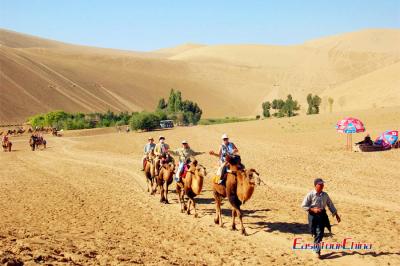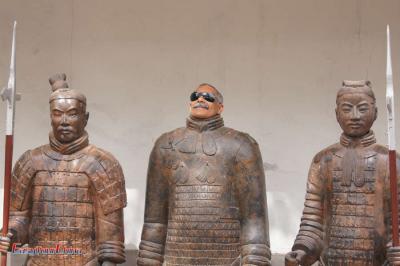4 Days Historical and Archeological Study Exploration in Xian
Overview
On 4 days private Xian historical tour of Xian, China’s previous powerful capital introduces you the great Terracotta Army and other archaeological treasures of China, and leads you to seek traces of glorious dynasties lost in time. Be embraced and study the history of Neolithic Age, Qin Dyansty, Tang Dynasty and the legendary stories of Silk Road; explore the Pyramid in China, timeless pagodas, venerable tombs, beautiful stone inscriptions, epitaphs… and even participate in simulated excavation with the local archaeologists!
Best for: History and archaeology enthusiasts, students, seniors
Duration: 6 days & 5 nights
Travel Type: Private tour - Flexible & Free to customize
Highlights:
- Engage an archaeologist for an exclusive experience in Hangyang Tomb
- Discover the brilliant history of Xian, as an ancient capital for several of China's great dynasties over 1000 years.
- Delve into ancient Chinese culture and art showcased in some of China's most important archaeological sites.
Customize Your Tour:
☑ Travel Dates ☑ Your Interests ☑ Your Travel Style
Itinerary Expand All
Upon you arrival, you will be welcomed by your Easy Tour China local guide at the arrival hall in the Airport. Drive 30min to visit Hanyang Tomb before transferring to hotel. Hangyang Mausoleum is a joint mausoleum of Liu Qi (188 -141 BC), the fourth emperor of the Western Han Dynasty, and his wife Empress Wang. The burial pits around the emperor's tomb are the most important part. Adopting heated glass walls and tunnel to separate the relics and visitors into two areas of different temperature and humidity, visitors can see the excavated relics in short distance.
OPTIONAL ACTIVITIES
- Simulated Excavation is a practice project which provides history enthusiasts and archaeological trainees a chance to participate in the real excavation of historical ruins. The explanation and demonstrations from the archaeologists will reveal the extent of the excavation skills used on the site. ( Reservation required one week in advance with an additional fee charged).
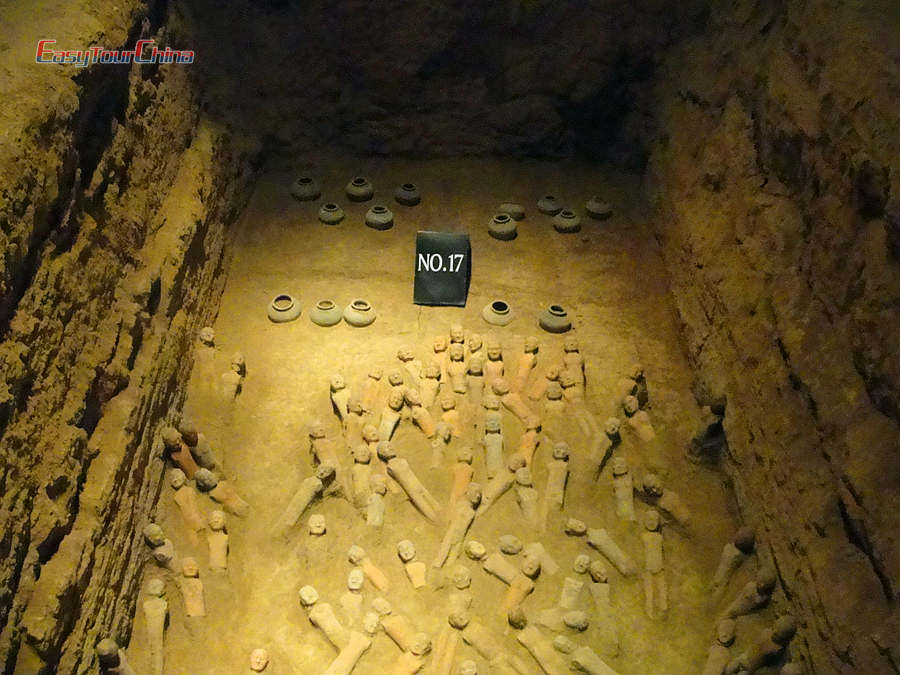
After breakfast in hotel, drive 1hr northeast to Lintong where Terracotta Warriors Museum located. As one of the most important archaeological finds in the 20th century, it is called the eighth wonder of the world. Visit 3 pits of the museum to see a magnificent collection of terracotta figures include warriors, chariots and horses.
Back to downtown and visit Small Wild Goose Pagoda, built between 707–709, during the Tang dynasty under Emperor Zhongzong. The pagoda has a brick frame built around a hollow interior, and the square base and shape is a typical style in the era. Afterwards, visit the Xian Museum next to the pagoda, In the museum, a large map on the ground of the hall shows the different locations of Xian (formerly called Chang'an) from Qing Dynasty to Tang Dynasty. And you can also see the model of Chang'an in Tang Dynasty and other relics showing the history of Xi'an, the capital of 13 dynasties.
Meal: B, L
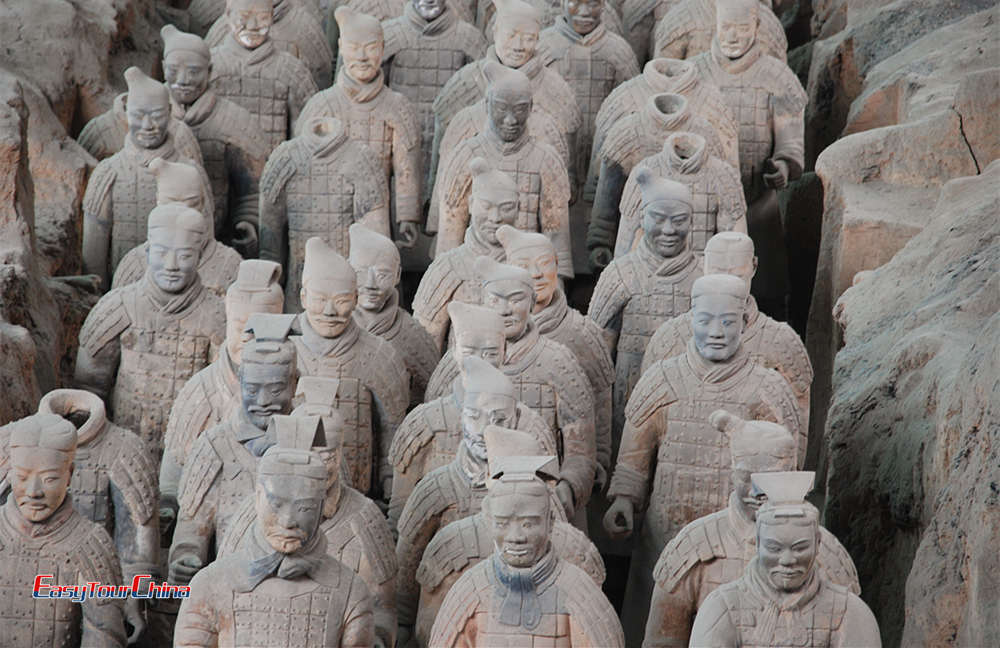
Continue your history tour of Xian, visit Forest of Stone Stele Museum in the morning. The museum is the art center of Chinese calligraphy and treasure house of stone sculpture art. It preserves more than 4000 pieces of stone inscriptions, epitaphs, religion stone sculptures and mausoleum stone sculptures from the Qin and Han dynasties to the Ming and Qing dynasties. Among them, the Steles of Islam Spread in China (Daqin Jingjiao Liuxing Zhongguo Bei) records the prosperity of Islam when it was introduced to China from Rome.
And then go to visit the ruins of Banpo Neolithic Village. The ruins of this 6000 year-old village represents the earliest signs of human habitation around Xian. A large hall has been built over what was part of the residential area of the village.
Afternoon visit Big Wild Goose Pagoda and the Grand Mosque. As the city emblem, Big Wild Goose Pagoda was first built in Tang Dynasty for the storage of Buddhist scriptures taken from India by Monk Xuanzang. The Grand Mosque is located in the Muslim Quarter. Unlike other mosques, the Great Mosque is built in a Chinese architectural style and most of the grounds are taken up with gardens, except for some Arabic lettering and decorations, the mosque has neither domes nor traditional-style minarets. It's still an active place of worship and several prayer services are held each day.
Meal: B, L
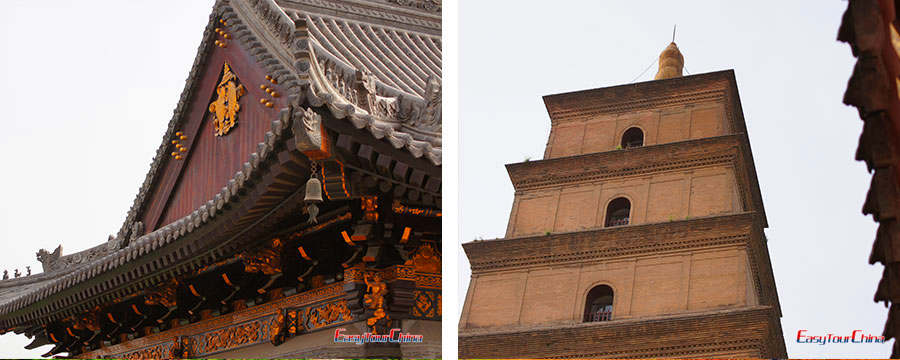
Excursion to Qian County, 85km northwest from downtown and visit Qianling Mausoleum, the only tomb shared by two emperors in Tang Dynasty, Emperor Gaozong (649–683), adn his wife, Wu Zetian, who was China's only reigning female emperor from 690–705.And you will also visit Tomb of Princess Yongtai. Princess Yongtai was the daughter of the Tang emperor Zhongzong, and was the grand daughter of Emperor Gaozong and Empress Wu Zetian. The tomb is a pyramid structure that consists of a burial chamber and a passageway. There are a variety of funeral offerings, including valuable relics such as gold and silver items, porcelain, art work, ceramics, and much more.
After four days trip to explore the historical and archeological sites in Xian, you may have learnt a lot of China history in and before Tang Dynaty. From Xian, the starting point of ancient Silk Road, you can follow the foot prints of ancient people to explore the west part of China along the Silk Road.
Transfer to the airport after the visit for your next destination. End of your 4 days Historical and Archeological Study tour in China.
Meal: B
Extend the Tour
Dunhuang: A legendary city on the great “Silk Road, featuring numerous historical sites. Add 2-4 days to Dunhuang to discover Sing Sand Mountains, Mogao Grottoes, the Great Wall of Han Dynasty.
Pingyao: the best-preserved ancient town in China and UNESCO World Cultural Heritage Site. Add 2-3 days to explore the must-sees of Pingyao Ancient City.
Datong: China's capital for three separate dynasties with amazing historical and cultural heritages. Add 3-4 days to visit the spectacular Yungang Grottoes (UNESCO World Heritage) and the interesting Hanging Temple built into a cliff.
